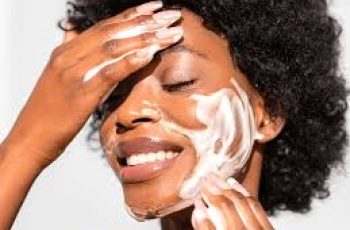
What Is Skin Cycling and Should You Try It? (Expanded and Simplified Version)
Skin cycling is a method of organizing your skincare routine in a smart, gentle way. Instead of using the same powerful products daily, you rotate them.
This helps your skin stay healthy, avoid irritation, and stay hydrated.
The goal of skin cycling is to get great results from your skincare products—like glowing, clear skin—without damaging your skin barrier.
It gives your face a break from strong ingredients, such as exfoliants and retinoids.
This technique was made popular by Dr. Whitney Bowe, a board-certified dermatologist. She talked about it on social media, especially TikTok, where it gained a lot of attention.
Let’s explore how skin cycling works, what its benefits are, and whether it’s right for your skincare routine.
How Skin Cycling Works
Skin cycling usually follows a four-night routine. You use different products each night and allow your skin time to rest between stronger treatments.
Dermatologist Dr. Nkem Ugonabo explains that this method gives your skin the benefits of strong ingredients with fewer side effects like redness or dryness.
Here’s a common skin cycling schedule:
Night 1: Exfoliation
Use a product with acids that remove dead skin cells.
Examples include AHAs like glycolic acid or BHAs like salicylic acid.
Night 2: Retinoids
Use a product with retinol or tretinoin.
These help treat acne, fine lines, and uneven skin tone.
Nights 3 and 4: Recovery
Skip the strong stuff. Use gentle cleansers and moisturizers.
Let your skin heal and hydrate during this break.
This is just a basic plan. You can adjust it based on your skin type or what your dermatologist recommends.
Some people also add other steps. For example, “slugging” is when you apply a thick layer of ointment like petroleum jelly overnight. It locks in moisture.
But if you do it too often, it may clog your pores and cause breakouts.
Others might use vitamin C serum or toner on recovery days to boost brightness or hydration. These should be mild enough not to interrupt the healing process.
Benefits of Skin Cycling
One major benefit of skin cycling is that it makes strong skincare products easier to tolerate. If you’ve ever reacted badly to retinol or exfoliants, skin cycling might be for you.
Here are some more benefits:
1. Protects Your Skin Barrier
Your skin barrier is the outermost layer of your skin. It locks in moisture and protects you from irritants, pollution, and allergens.
When you overuse harsh products, you can damage this barrier. That can lead to dry, inflamed, or sensitive skin.
By cycling your products and taking rest days, your skin barrier has time to recover. This helps you avoid long-term damage and keeps your skin resilient.
2. Reduces Irritation and Side Effects
Products like retinol and acids can be powerful, but they can also cause burning, redness, peeling, and dryness if overused.
Skin cycling allows you to enjoy the benefits of these ingredients while reducing your risk of side effects. You ease your skin into new products rather than overwhelming it.
Dr. Mary Alice Mina says it’s great for people introducing new, possibly irritating products. Skin cycling helps the skin adjust slowly and safely.
She also notes that some treatments, like topical steroids, should not be used too often. Overuse can lead to skin thinning or changes in pigmentation. Skin cycling helps manage this.
3. Prevents and Treats Dry Skin
If you have dry or sensitive skin, or you live in a dry climate, skin cycling can help. Many acne and anti-aging treatments dry out the skin. Rest days help restore moisture.
On recovery nights, you can focus on nourishing your skin. Use a gentle cleanser and a rich moisturizer. This is especially important in cold or dry weather.
Retinoids, while effective, are known to dry out the skin. Recovery nights can help you continue using them without flaking or discomfort.
Downsides of Skin Cycling
Skin cycling isn’t perfect for everyone. Here are some cases where it might not work as well:
1. May Reduce Treatment Strength
Some skin conditions, like acne or hyperpigmentation, may need daily or frequent use of certain products. If you skip days, your results might take longer or be less effective.
Dr. Ugonabo says that for some patients, she prefers a more consistent retinoid routine. If your product needs daily use for best results, cycling might not be ideal.
2. Might Not Fit Your Prescription Plan
If your doctor has prescribed a specific skincare plan, don’t change it without checking first. Some prescriptions work best with daily use.
For example, sunscreen is essential every day, even on recovery days. It helps prevent damage from UV rays, which can worsen many skin problems.
Always follow your dermatologist’s advice before making changes to a prescribed skincare routine.
Who Should Try Skin Cycling?
Skin cycling is great for people with sensitive skin or those new to active ingredients like acids and retinol.
You might benefit from skin cycling if:
You’ve had skin irritation or breakouts from skincare products
You want a simple, organized skincare routine
You have dry, itchy, or inflamed skin
You have skin conditions like eczema or rosacea
You want to avoid overwhelming your skin with too many steps
Dr. Ugonabo says that people who are just starting skincare or who have sensitive skin can benefit the most.
It’s also good for people who feel confused or overwhelmed by multi-step routines. Skin cycling gives structure to your routine and helps you focus on what works.
Summary: Is Skin Cycling Right for You?
Skin cycling is a smart way to organize your skincare routine. By alternating active ingredients with rest days, you may avoid irritation, dryness, and long-term skin damage.
A basic skin cycling plan might look like this:
Night 1: Exfoliate with AHAs or BHAs
Night 2: Use a retinoid product
Nights 3 and 4: Recover with gentle products only
You can adjust the cycle depending on your skin’s needs. Some people cycle over three nights; others might add extra rest days.
Skin cycling helps balance effective treatment with skin recovery. It can protect your skin barrier, reduce unwanted side effects, and prevent dryness.
If you’re thinking of trying it, check with a dermatologist first. They can help you choose the right products and routine for your skin type and goals.


